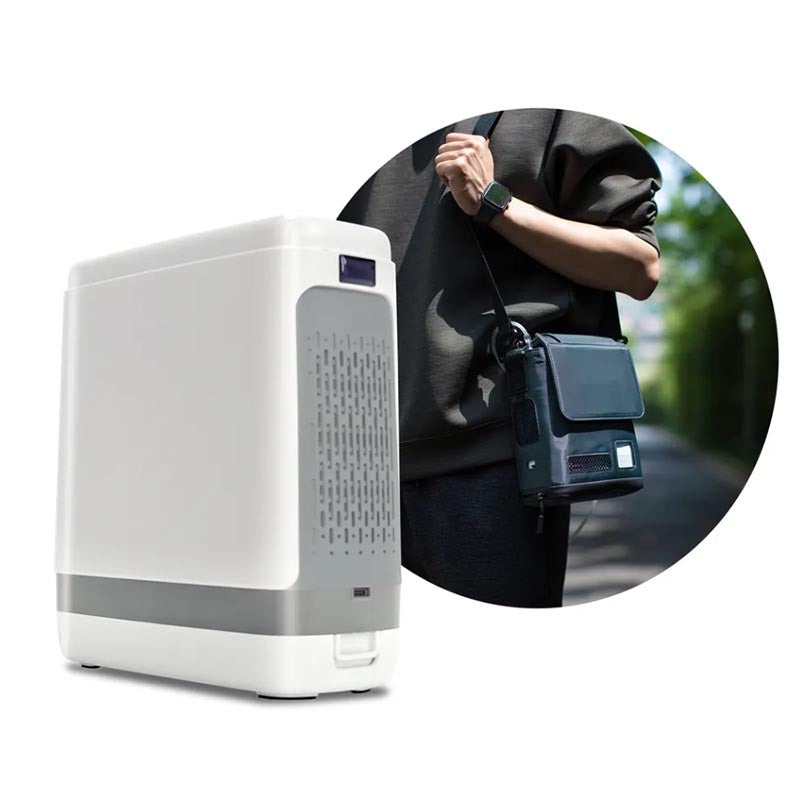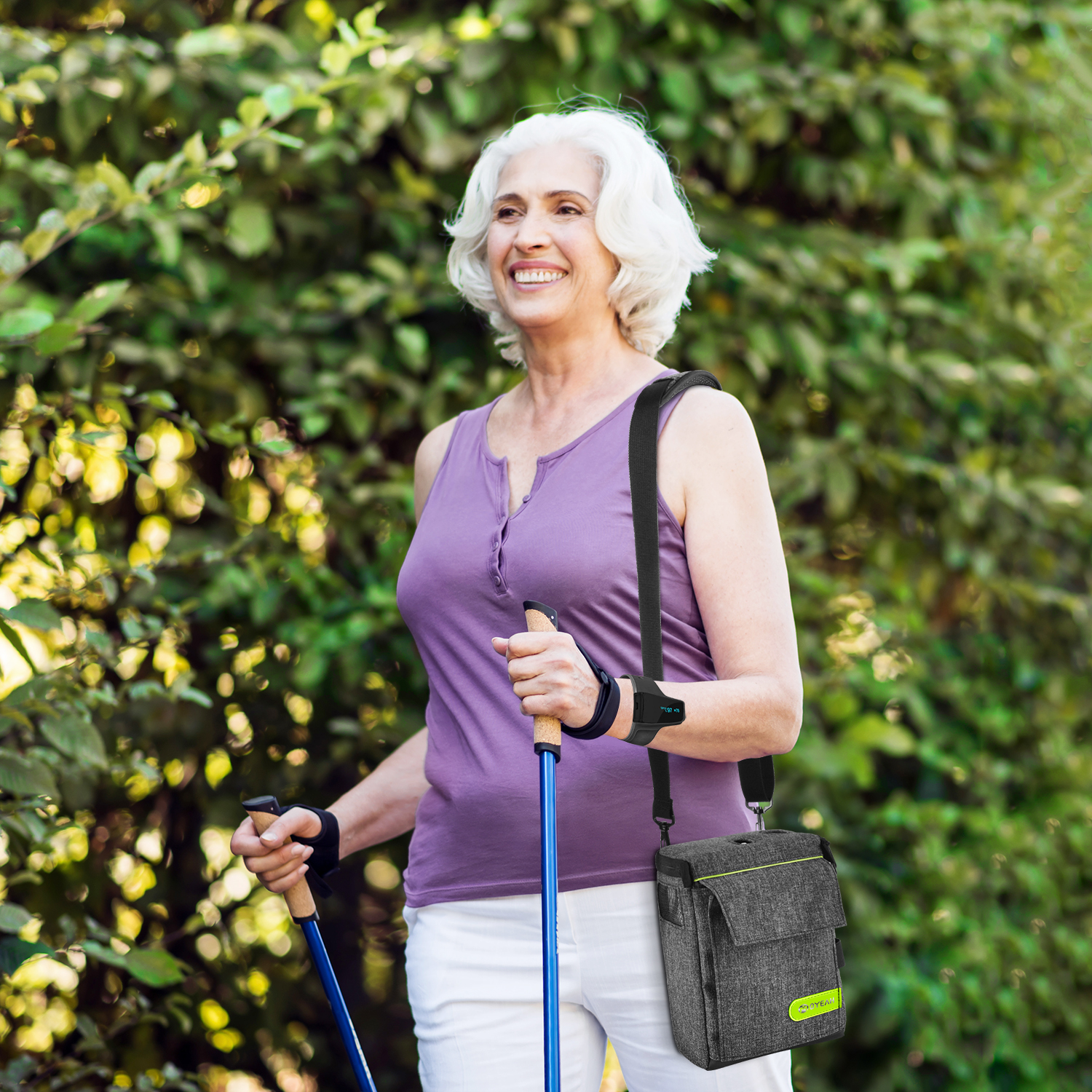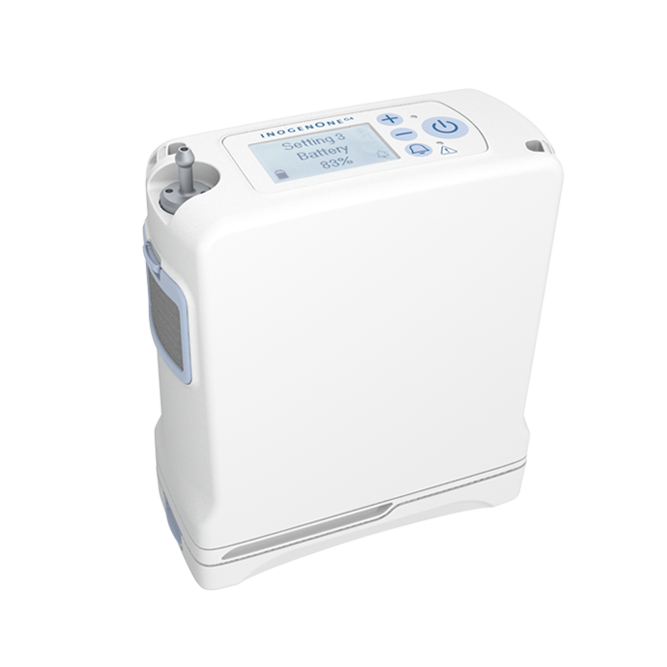Top Guidelines Of Portable Oxygen Concentrators
Wiki Article
Not known Details About Portable Oxygen Concentrators
Table of ContentsThe Greatest Guide To Portable Oxygen ConcentratorsFascination About Portable Oxygen ConcentratorsThe Definitive Guide for Portable Oxygen ConcentratorsSome Of Portable Oxygen Concentrators
Fixed oxygen concentrators were when the standard, yet these tanks could evaluate 50 pounds and were really cumbersome (Portable Oxygen Concentrators). Currently, portable oxygen concentrators finish the job, and they can suit a handbag or handbag! The only point you must remember is that mobile concentrators have more minimal oxygen shipment capacitiesThere are 2 main types of portable oxygen concentrators: pulse dose and continuous flow. As the name recommends, pulse dosage concentrators provide oxygen periodically, just activating when you breathe in. This kind of tool is generally suggested for COPD clients with limited oxygen needs, as the amount of O2 that a pulse dose concentrator can provide is relatively reduced.
This device can supply up to 3,000 m, L of oxygen every minute, while pulse dosage tools have a tendency to cap out at 1250 m, L. Continuous circulation devices are the go-to for many COPD patients, as they're suitable for individuals who require two to five liters of oxygen a minute.
Currently that you have this guide to the various kinds of portable oxygen machines, choose the most effective device with the assistance of your physician. You can discover our blog sites to discover even more about the kinds of mobile oxygen offered and our other items, like tubes and cannulas. Or you can contact us directly with any kind of specific concerns you may have.
What Does Portable Oxygen Concentrators Do?
We asked yourself how well these mobile oxygen concentrators would certainly work in health centers. POC concentrators boost the proportion of oxygen in ambient air people take a breath in, whenever they require an increase.When it comes to portable oxygen therapy, there are two major alternatives for distribution. These are mobile oxygen cyndrical tubes which have pressed oxygen gas, or oxygen concentrators, which make use of a battery powered system to compress and filter air, in order to create a consistent supply of concentrated oxygen. In this post, AMS Composite Cylinders Technical Director, Tony Morrin, compares both, considering the advantages and disadvantages of each oxygen delivery system for NHS medical oxygen individuals in terms of individual autonomy.

Mobile Oxygen Concentrator Oxygen pureness is regularly higher when provided from cylinders it never ever goes down below 99. 6%, no matter the flow price needed. In battery-powered concentrators, purity is affected by flow price, and may be 90% or less, depending upon the tools. Whilst oxygen concentrators can be valuable for individuals that require a lower circulation of oxygen, cyndrical tubes offer higher concentrations that can be preferable for patients with high flow demands.
The Best Strategy To Use For Portable Oxygen Concentrators
Both systems need the person to lug about tools. For cylinders, this will include lugging a bag (and periodically a trolley) and for mobile oxygen concentrators this will include the bag, trolley and power charger. Weight sensible, portable oxygen concentrators can be comparable in weight, or occasionally, lighter than typical aluminium cyndrical tube systems.
They will need to enhance dramatically if they are to give the very same level of efficiency visit the website as comparable composite cyndrical tubes. Oxygen constantly carries a safety and security danger. On one hand, ought to cylinders spring a leakage, they can produce an oxygen rich atmosphere that could lead to a rise in fire danger.

The distinction is that there are considerable upfront prices to purchasing a mobile oxygen concentrator, but reduced running expenses utilizing cyndrical tubes allows the buyer to spread out the cost over an extensive time period. One minor disadvantage of a mobile oxygen concentrator is the sound portable systems make a substantial quantity of sound during operation, which numerous clients locate distracting.
The smart Trick of Portable Oxygen Concentrators That Nobody is Discussing

Our premium carbon composite cylinders offer high pressure (300 Bar), reduced weight, and NLL (Non-Limited Life) efficiency, and are recognized for use worldwide. More information concerning AMS Compound Cylinders Ltd can be located at .
Oxygen concentrators are made with individual movement in mind. Whether it's a desktop computer variation for home use or a smaller sized, light-weight version for on-the-go, these tools allow clients to relocate openly without being tethered to a fixed unit. Particularly Source for the ones specifically designed for transportability, patients can lug them around, assisting over here in travel and day-to-day activities easily.
One of the significant conveniences of using an oxygen concentrator is the removal of the constant need to replenish oxygen storage tanks. This not only minimizes the logistical obstacles and persistent costs related to refills yet likewise ensures that the individual has a much more foreseeable and steady source of oxygen. Oxygen concentrators are developed to fit flawlessly right into the home atmosphere.
Report this wiki page